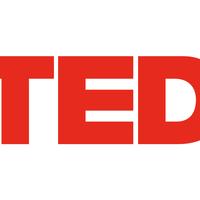David Gallo shows underwater astonishments
We're going to go on a dive to the deep sea.
And anyone that's had that lovely opportunity knows that for about two and half hours on the way down, it's a perfectly positively pitch-black world. And we used to see the most mysterious animals out the window that you couldn't describe. These blinking lights: a world of bioluminescence, like fireflies. Dr. Edith Witter -- she's now at the Research Conservation Association -- was able to come up with a camera that could capture some of these incredible animals, and that's what you're seeing here on the screen. That's all bioluminescence.
So, like I said: just like fireflies. There's a flying turkey, under the tree. (Laughter) I know. I'm a geologist by training. But I love that. And you see that some of the bioluminescence they use to avoid being eaten, some they use to attract prey. But all of it, from an artistic point of view, is positively amazing. And a lot of what goes on inside -- here's a fish with glowing eyes, pulsating eyes. Some of the colors are designed to hypnotize. These lovely patterns. And then this last one: one of my favorites, this pinwheel design. Absolutely amazing, every single dive. That's the unknown world.
And today we've only explored 3 percent of what's out in the oceans. Already we've found the world's highest mountains, the world's deepest valleys, underwater lakes, underwater waterfalls -- a lot of that we shared with you from the stage. And in a place we thought there was no life at all, we find more life, we think, and diversity and density, than the tropical rainforest. Which tells us that we don't know much about this planet at all. There's still 97 percent, and either that 97 percent is empty or just full of surprises. But I want to jump up to shallow water now, and look at some creatures that are positively amazing.
Cephalopods -- head-foots. As a kid I knew them as calamari mostly. This is an octopus. This is the work of Dr. Roger Hanlon at the Marine Biology Lab. And it's just fascinating how cephalopods, with their eyes, incredible eyes, sense their surroundings, look at light, look at patterns. There's an octopus moving across the reef. Finds a spot to settle down, curls up and then disappears into the background. Tough thing to do. In the next bit, we're going to see a couple squid.
This is a squid. Now males, when they fight, if they're really aggressive, they turn white. And these two males are fighting. They do it by bouncing their butts together, which is an interesting concept. Now here's a male on the left and a female on the right. Now, the male has managed to split his coloration, so the female only always sees the kinder gentler squid of him. And the male -- (Laughter) We're going to see it again. Let's take a look at it again. Watch the coloration: white on the right, brown on the left. He takes a step back, so he's keeping off the other males by splitting his body and comes up on the other side ... Bingo! Now I'm told that this is not just a squid phenomenon with males, but I don't know. (Applause) Cuttlefish.
I love cuttlefish. This is a giant Australian cuttlefish. And there he is. His droopy little eyes up here. But they can do pretty amazing things. Here we're going to see one backing into a crevice, and -- watch his tentacles. He just pulls them in. Makes him look just like algae. Disappears right into the background. Positively amazing. Here's two males fighting. Once again, they're smart enough, these cephalopods -- they know not to hurt each other. But look at the patterns they can do with their skin. OK? Just an amazing thing. Here's an octopus.
Sometimes they don't want to be seen when they move, because predators can see them. Here, this guy can actually make himself look like a rock, and, looking at his environment, can actually slide across the bottom, using the waves and the shadows so he can't be seen. He just blends in; his motion blends into the background. The moving rock trick. So we're learning lots new from the shallow waters. Still exploring the deep water, but learning lots new from the shallow waters. There's a good reason why: the shallow waters are filled with predators. Here's a barracuda. And if you're an octopus or a cephalopod you really understand how to use your surroundings to hide. In the next scene you're going to see a nice coral bottom.
And you see that an octopus would stand out very easily there if you couldn't use your camouflage, use your skin to change color and texture. Here's some algae in the foreground. And an octopus. Ain't that amazing? Now, Roger spooked him, so he took off in a cloud of ink. When he lands, the octopus says, "Oh, I've been seen. The best thing to do is to get as big as I can get." That big brown makes his eyespot very big. He's bluffing. Let's do it backwards. I thought he was joking when he was showing it to me. I thought it was all graphics. So here's it in reverse. Watch the skin color, watch the skin texture. Just an amazing animal, can change color and texture to match the surroundings. Watch him blend right into this algae. One. Two. Three. And now he's gone, and so am I. Thank you very much.

